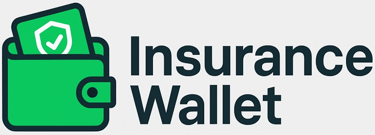🧾 Understanding What Shapes Insurance Premiums
Premium is the price a policyholder pays for insurance protection.
In insurance, premium is not random — it is based on scientific calculation, statistics, and underwriting judgement.
Premium must be fair to the customer and adequate for the insurer.
The IC-01 syllabus highlights the key inputs insurers consider 👇
🔍 1. Nature & Level of Risk
The core idea in insurance pricing is simple:
Higher the risk, higher the premium.
If the chance of loss or the severity of loss is higher, the premium will be higher.
Example:
A firecracker factory pays a higher premium than a garment shop, because the fire risk is greater.
🎂 2. Age of the Insured
Age is a major indicator of risk, especially in life and health insurance.
Younger people usually pay lower premiums
Older ages attract higher premiums due to greater health and mortality risks
Age = Risk indicator = Pricing factor
🩺 3. Health Condition & Lifestyle
Medical history, current health condition, and family history influence premium.
Lifestyle habits matter too — such as:
Smoking
Alcohol consumption
Adventure sports
Obesity or sedentary lifestyle
Healthy life = lower premium
Risky habits = higher premium (loadings)
🧑🏭 4. Occupation
Some jobs carry more danger or stress than others.
Insurers classify occupations as low-risk or high-risk.
Desk job → Lower premium
Driver, pilot, construction worker → Higher premium
Riskier profession = More premium.
💼 5. Sum Assured / Coverage Amount
Simply put — the higher the coverage, the higher the premium.
However, large policies often benefit from per-unit cost reduction due to pooling.
Think of it like bulk pricing — more coverage, but priced efficiently.
🏠 6. Type & Value of Property (Non-Life Insurance)
In motor and property insurance, the build quality, usage, and value impact premium.
Luxury car vs. small car
High-rise office vs. small rural shop
Different assets carry different risks and repair costs → Different premiums.
📍 7. Location & Exposure
Where the insured lives or operates matters.
Flood-prone areas
High-crime zones
Industrial fire-risk belts
Higher exposure = Higher premium
Location is often a silent but powerful pricing factor.
🛟 8. Safety & Risk Control Measures
Insurers reward safety-conscious customers.
When a person or business takes precautions, risk reduces — and premium can reduce too.
Examples:
CCTV and alarms
Fire extinguishers and sprinklers
Healthy lifestyle commitments
Anti-theft devices in vehicles
Prevention = better pricing.
📄 9. Policy Features & Terms
Premium varies depending on:
Policy period
Riders & add-ons
Deductibles / excess
Waiting periods
Cash value features (in life insurance)
More benefits = Higher premium
Higher deductible = Lower premium
🧾 10. Past Claims Experience
A history of frequent claims increases premium.
Example:
A motor policyholder who files claims every year may lose discounts and face higher pricing.
Good claim behaviour = Discounts like NCB (No Claim Bonus)
📊 11. Actuarial Assumptions
Insurers use mortality tables, morbidity data, and loss ratios to estimate future risk.
These scientific calculations form the backbone of premium pricing.
Insurance is mathematics, discipline, and fairness.
⚖️ 12. Regulatory Guidelines
The IRDAI may guide or control pricing in specific products like motor third-party and certain health policies.
Rules ensure fairness, solvency, and consumer protection.
✅ Summary
Premiums depend on:
Risk characteristics
Age, health & lifestyle
Occupation
Safety behaviour
Location & asset value
Past claims
Coverage structure
Actuarial and regulatory factors
Better risk profile = Better premium
Insurance pricing is a balance between fairness to the customer and sustainability for the insurer.
🎓 Final Message for Advisors
When clients ask “Why is my premium like this?”, explain:
“Premium reflects risk. Healthy habits, safety measures, and fewer claims help reduce cost.”
Educate customers — it builds trust and credibility.
